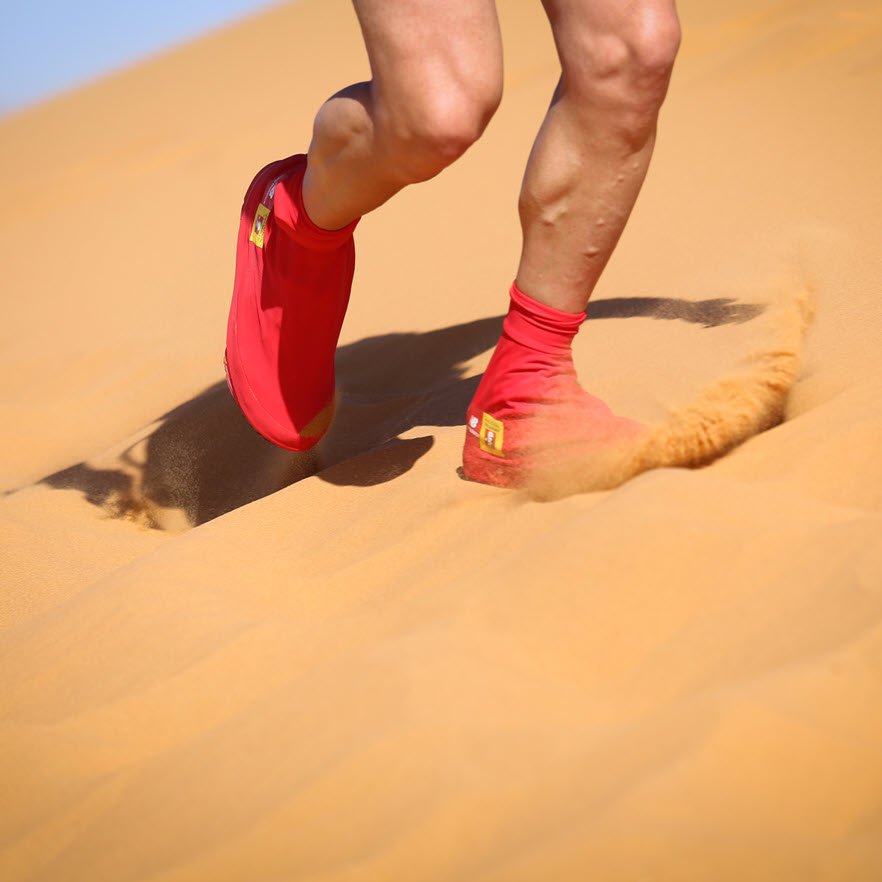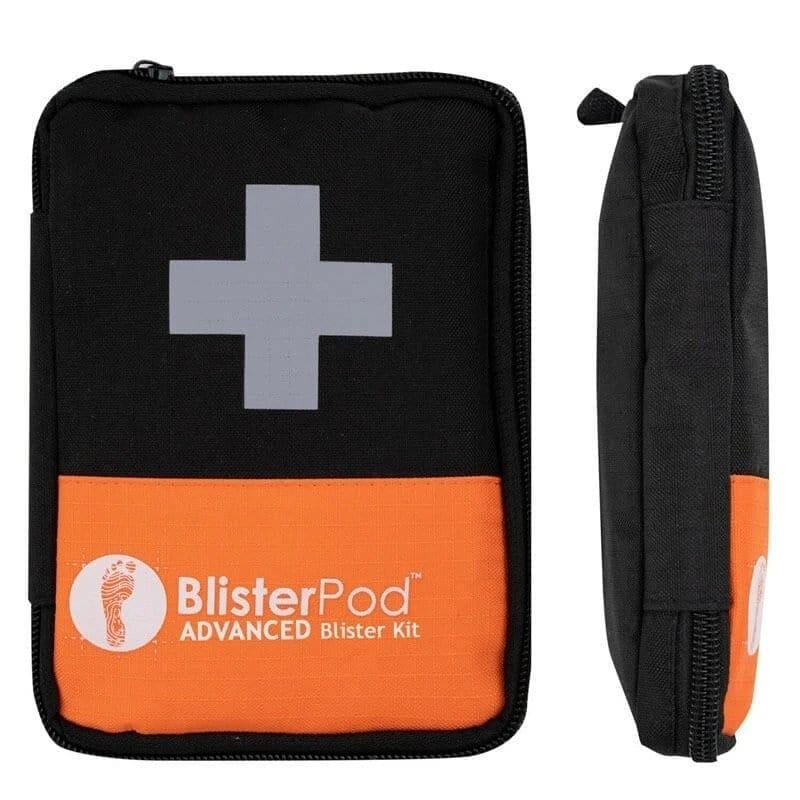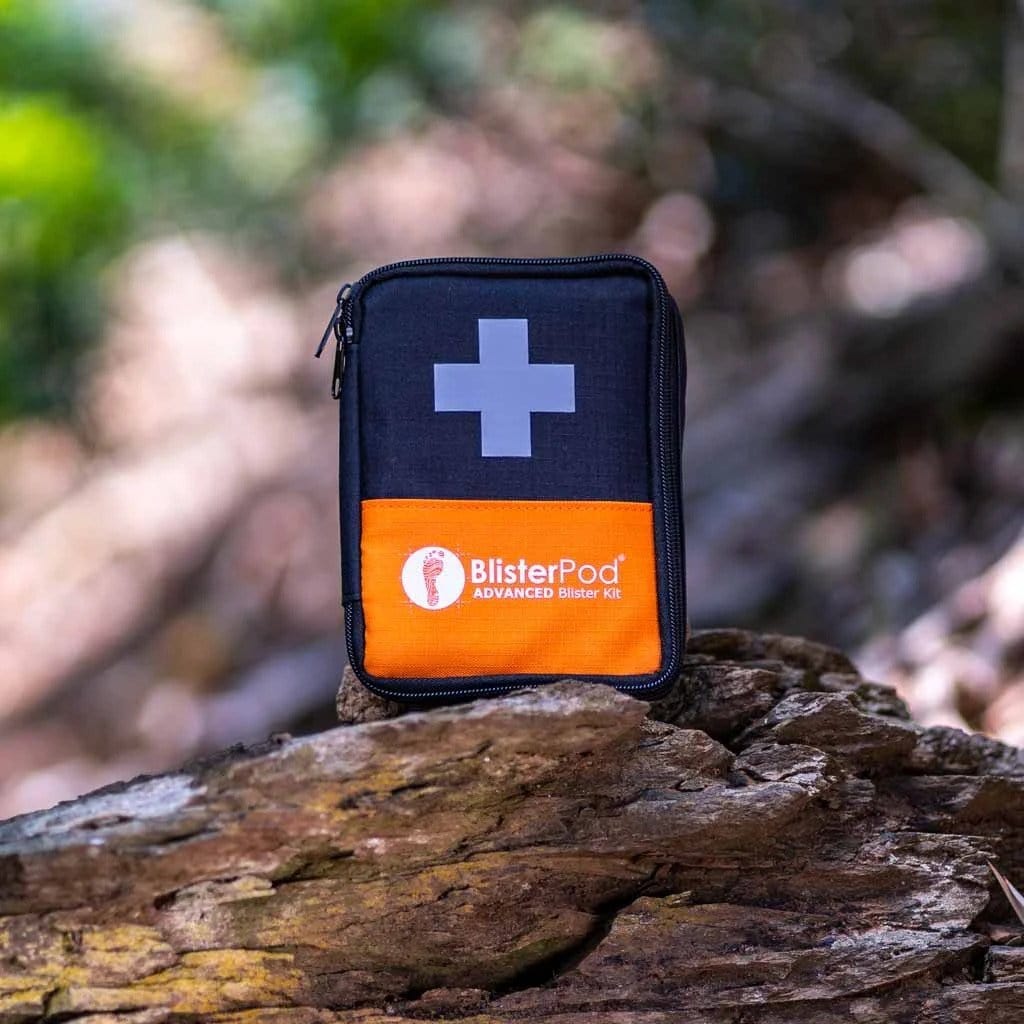Gaiters are used to keep stuff out of your shoes - mainly from the top where your foot enters the shoe. However, most of them don't cover the mesh material of the shoe upper around the toe and forefoot, the eyelets. Sand and water can freely enter the shoe in these areas. So when it comes to ultramarathon, standard hiking gaiters and trail running gaiters simply won't do. As a result, this article has a focus on the full-shoe gaiters used in ultramarathon. I'm particularly interested to understand their ability to keep the feet dry in wet ultras to prevent maceration. Be it from rain, running through moisture-laden grasses or full immersion situations like puddles and river crossings. How waterproof are full-shoe ultramarathon gaiters? READ ARTICLE 1: How To Use Hiking and Running Gaiters
My Experience With Full-Shoe Ultramarathon Gaiters
As I mentioned in the first article of this series, I don't run ultramarathons, I provide foot care. I prefer to go to the continuous 6-day ultramarathons where runners run a smallish loop. My favourite local event is the Adelaide 6-Day Ultra which is ~1.5km bitumen and paved surface. Full-shoe gaiters don’t feature at all in these events. In terms of moisture-management, these runners usually bring several pairs of shoes and socks and can stop and change into something drier quite readily, and allow their wet shoes to air dry. The race I saw most gaiters in was the Big Red Run in Birdsville. This was a desert race. The main aim of gaiters was to keep the desert sand out. From memory, DirtyGirl Gaiters and RaidLight Desert Gaiters featured most, with a few MyRaceKit Desert Gaiters. There was a particularly fetching home-made pair that caught my eye too, made from an old pair of trousers and some gaffa tape! Unexpectedly, it rained at the Big Red Run that year. Day 2 was a washout, and we had several cases of mild maceration.
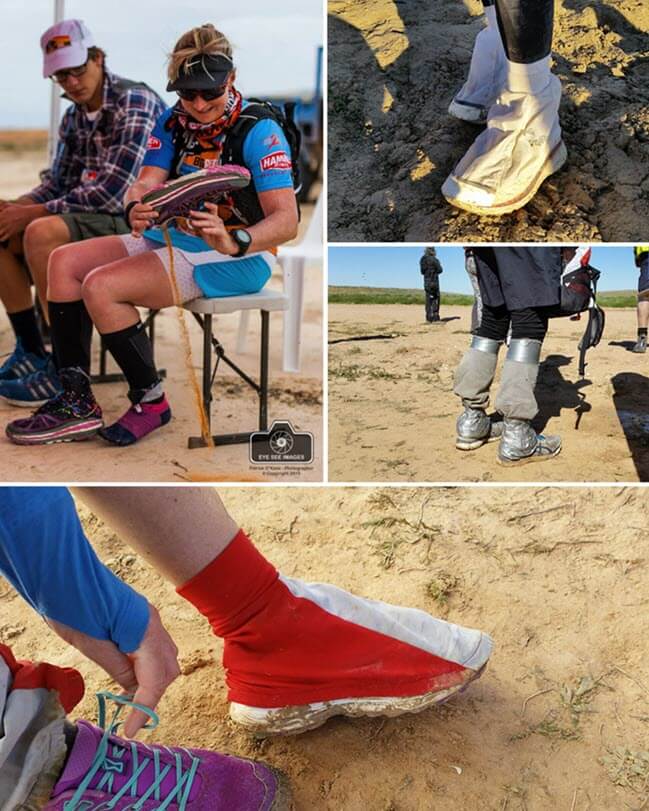
Gaiters seen at Big Red Run (clockwise: Dirty Girl Gaiters, MyRaceKit Desert Gaiters, home-made gaiters, RaidLight Desert Gaiters).
I provide education around blister management. While maceration is a different skin injury to blisters, I often get asked about keeping the feet dry in races where there is likely to be rain, snow and river crossings. The most recent example was the Southern Lakes Ultra (Queenstown, NZ) for which I presented a webinar on blister management. There are many small creek crossings, lots of running through dew-laden grasses, areas of snow-covered ground, and potentially rain. Runners wanted to know how to keep their feet dry. WANT TO LEARN MORE ABOUT MACERATION? Read these three comprehensive articles. Since that webinar, I decided it's time I thoroughly investigated the ability of gaiters to keep water out of the shoe in an ultramarathon situation. Surprisingly, there is NO INFORMATION about this online.
Are Hiking and Trail Running Gaiters, Like These, Enough?
No, they're not. You can clearly see, sand and water can still enter your shoe through:
- The perforations in the mesh upper: Simply running over wet grass in running shoes is enough to get sopping wet socks in a few minutes. At a guess, 99% of running shoes have this mesh upper. It’s there to encourage the evaporation of perspiration to keep your feet drier and cooler during the rigours of your running. That’s to mention nothing of rain and puddle splashes.
- The eyelets: These are the holes that your laces go through. Ongoing rain and puddle splashes will see water eventually enter all of these entry points and soak your sock. That’s to mention nothing of an emersion situation like a creek crossing where water will quickly seep in.
- The tongue area: While the gaiters that hook onto your laces kind of cover some of the eyelets and tongue of your shoe, they don’t cover the whole area and they certainly won’t help you during a river crossing.
Enter... Full-Shoe Ultramarathon Running Gaiters
That's why full shoe gaiters exist. Take a look at the pictures below and you can clearly see ALL of the entry points are covered. Most, actually all, seem to be made for the desert. The obvious aim is to keep sand from entering the shoe.
So, How Waterproof Are Full-Shoe Ultramarathon Gaiters?
This is the question I'm most interested in. I know they keep sand out - even very fine desert sand, which is great! But how waterproof are they? The first thing to consider is how these gaiters attach to the shoe and stay there. The answer is, velcro (hook and loop). Most of them come with the velcro, some have it already sewn into the gaiter - see the RaidLight Desert Gaiter video below. Some places even offer a stitching service when you buy your shoes and gaiter from them, like myRaceKit. Or you can take your shoes to a cobbler and have them glue/sew the opposing velcro piece onto your shoe. Read Sarah Lavender Smith's experience with customising and attaching full shoe ultramarathon gaiters to her shoes. In maximising waterproofing, it's important to get this done well. If there are gaps in this join, water will find it's way in running through puddles, snow and full-immersion scenarios, like a river crossing?
The second thing to consider is the water-resistance of the actual material(s) used in the gaiter's construction (read the first article for an overview of the materials used to make gaiters - from canvas to lycra). This is what I'm going to be looking closely at to give you an idea of which gaiter will perform best in keeping water out to keep your feet dry and prevent maceration in wet ultramarathons.
The Water-Resistance Testing Procedure
I ordered 6 full-shoe gaiters used in ultramarathon to test.
- I dropped a single drop of rainwater on to the front section of the gaiter (and the ankle cuff if it had one) to see if the water beaded.
- Then I rubbed my finger back and forth on the underside of the gaiter, without stretching the material much at all, to see whether this facilitated the movement through the material.
- I also tested breathability, simply by attempting to blow through the material and seeing how much resistance there was.
A Closer Look at 6 Full-Shoe Ultramarathon Running Gaiters
Here are the results, as well as some general details of the 6 gaiters, taken from the manufacturers' websites.
1. MyRaceKit Desert Gaiters
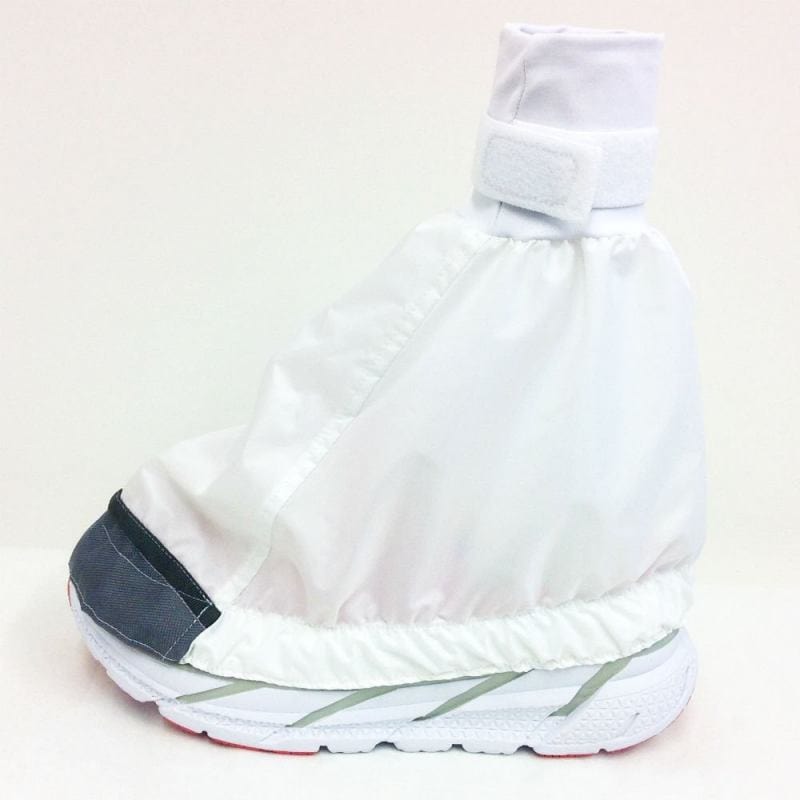
myRaceKit's Desert Gaiter
- Height: Ankle height gaiter
- Materials: Military grade rip-stop
- Durable toe cap protects the front of the gaiter when going through rocky terrain
- Soft-feel elasticated ankle-cuff plus adjustable wrap-around ankle strap for greater sand protection and secure fit on the ankle
- Colours: White only
- Sizes: Five size options for optimal fit; left and right design (attach ankle strap on outside of ankle)
- Attachment to shoe: Extra-wide velcro loop receptor with very strong adhesion, ready-stitched to gaiter for easy, 100% coverage around the contours of any shoe shape. This velcro receptor has been specially manufactured for our gaiters and is incredibly strong whilst being light weight.
- Water-resistance: Minimally water-resistant
- Water somewhat beads
- A single rub allows water to pass through
- Breathability: Minimal breathability
- Buy from: myRaceKit
2. The Rough Country Silkworm Gaiters
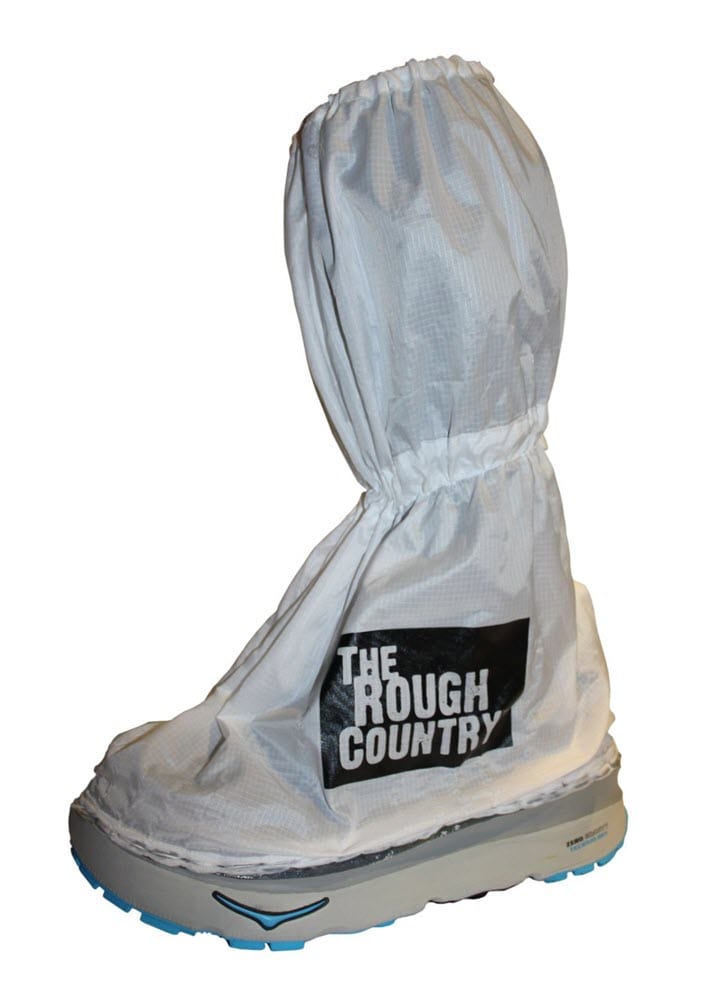
The Rough Country Silkworm Gaiter
- Height: Below-knee gaiter
- Materials: Rip-stop nylon that uses a special reinforcing technique for increased resistance to tearing and ripping
- Two security ties for added protection and to help customize the height you need to wear the gaiters
- Colours: White only to maximize heat reflection
- Sizes: 9 sizes
- Attachment to shoe: No velcro supplied. Recommended to be stitched by a cobbler.
- Water-resistance: Minimally water-resistant
- Water somewhat beads
- 1-2 rubs allows water to pass through
- Breathability: Minimal breathability
- Buy from: RacingThePlanet
3. The Rough Country Trail Running Gaiters
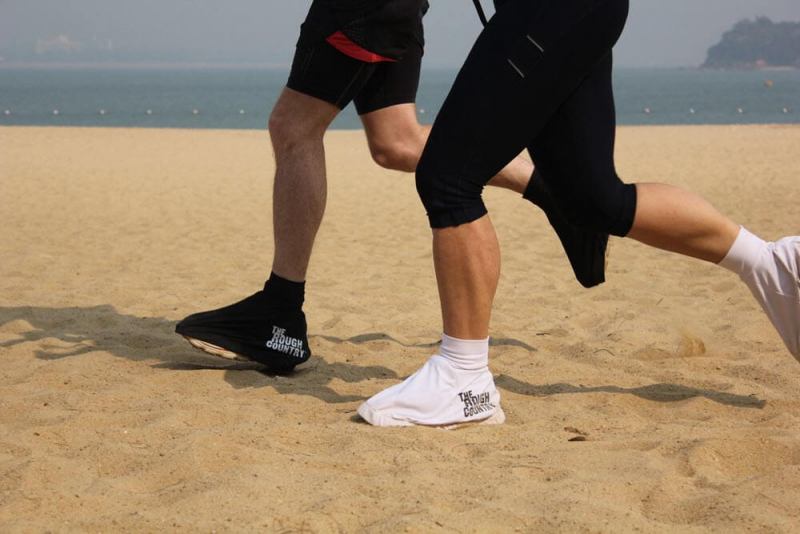
The Rough Country Trail Running Gaiters
- Height: Ankle-height gaiter
- Materials: 82% Polyamide and 18% Spandex. Reinforced toe to prevent tears.
- Colours: White and Black
- Sizes: 2 sizes:
- Attachment to shoe: Comes with velcro loop strip already stitched to bottom of gaiter. The hook strip is provided and to be secured to your shoe by glueing and/or sewing by a cobbler.
- Water-resistance: Extremely water-resistant
- Water beads well and rolls around a lot
- 200 rubs and I still couldn't get any water passing through!
- Breathability: Highly breathable
- Buy from: RacingThePlanet
4. RaidLight Desert Gaiters
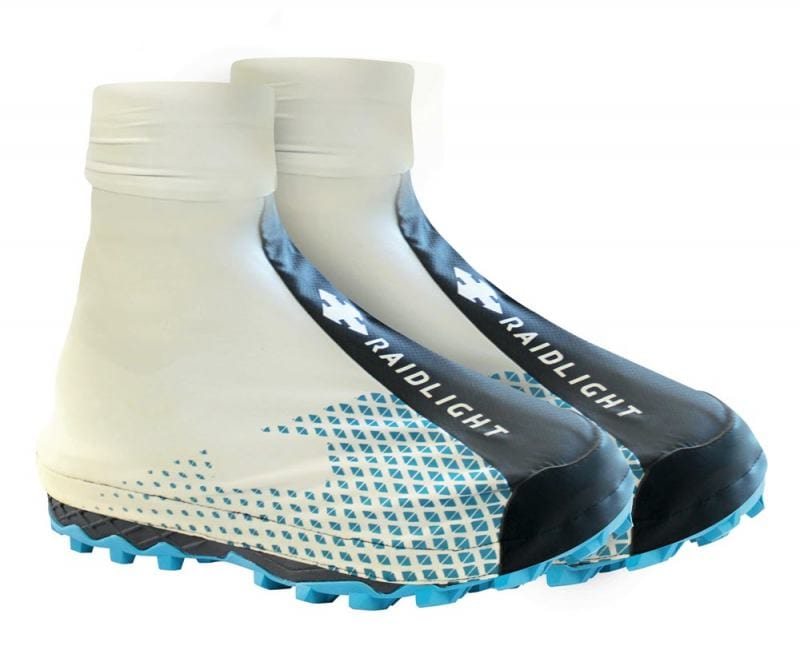
RaidLight Desert Gaiters
- Height: Ankle-height gaiter
- Materials: Double layer of 80 % Polyamide and 20 % Elastane with Hypalon reinforcement on the toe
- Colours: One only - grey (front panel)/white (side panels)/blue (side panel detail)
- Sizes: 2 sizes: 35-41 and 42-47
- Attachment to shoe: Comes with velcro loop strip already stitched to bottom of gaiter. The hook strip is provided and needs to be glued or sewn to the shoe as close to the midsole as possible to create a good seal.
- Water-resistance: Minimal-moderately water-resistant
- Central grey panel - Water does not bead, it immediately disperses over a large surface area, which reduces soak-through and aids evaporation. There is no immediate indication or feeling of wetness on the inside layer. Presumably because of the double-layer of material, and because the water spread over a wide area rather than simply passing through in that discrete location.
- Side white panel - Water beads and it takes about 35 rubs before water passes through.
- Area containing blue details/colour panels - water beads and it takes only 5 rubs before water passes through.
- Breathability:
- Central grey panel - Minimally breathable
- White/blue panel - Highly breathable
- Buy from: RaidLight
5. AR Desert Gaiters
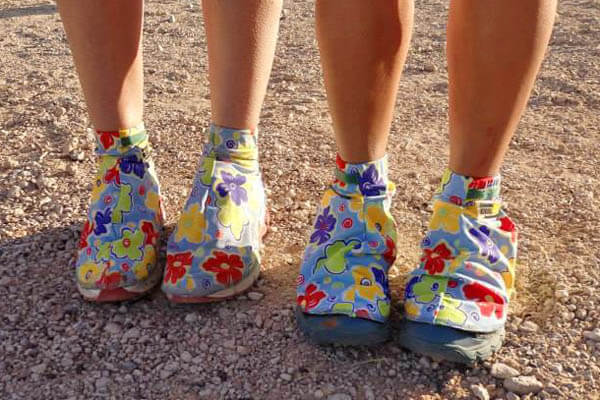
AR Desert gaiters
- Height: Ankle-height gaiter
- Materials: 4-way stretch lycra
- An adjustable Velcro tab around the ankle accommodates narrow ankles
- Colours: Many colours/patterns
- Sizes: Two sizes small (UK5 – UK8.5); large (UK9-UK13) - if your shoes are smaller/larger, we can customise for you.
- Attachment to shoe: A band of Velcro loop is already attached to 4/5 of the bottom of the gaiter and the receiving hook is supplied. This is to be stitched onto the shoe and per the image above. The final 1/5 (at the back) has a band of elastic for support and tension. See the helpful image below from AR Gaiters.
- Water-resistance: Minimally water-resistant
- Water does not bead - it immediately dissipates over the surface of the gaiter.
- A single rub allows water to pass through. Wetness if detectable on inside surface.
- Breathability: Highly breathable
-
Buy from: AR Gaiters by emailing Elizabeth
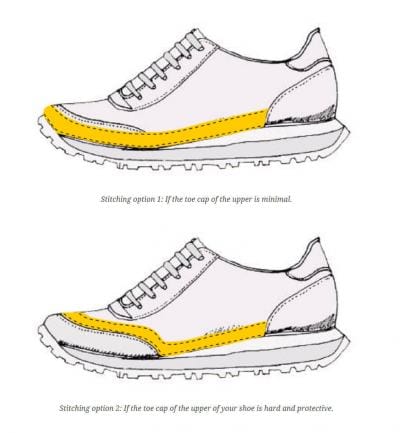
How to attach AR gaiters to your shoe with velcro
6. WAA Desert Gaiters
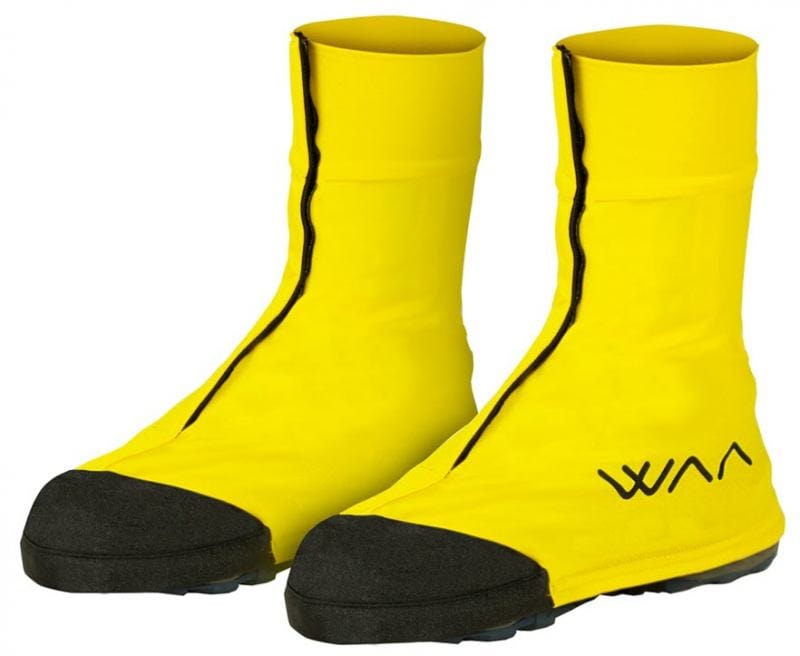
WAA Desert Gaiters
- Height: Ankle-height gaiter
- Materials: 95% Polyester and 5% Elastane (Spandex); Toe cap 100% Nylon
- Unique velcro join at front
- Colours: Yellow only
- Sizes: One size fits all (35-49)
- Attachment to shoe: Comes with velcro loop strip already stitched to bottom of gaiter. The hook strip is provided and to be secured to your shoe by glueing and/or sewing by a cobbler.
- Water-resistance: Moderately water-resistant
- Water beads
- It takes 20-25 rubs before water passes through
- Breathability: Highly breathable
- Buy from: TrailRunnerStore or WAA
Water Resistance & Breathability of 9 Popular Ankle and Full-Shoe Gaiters
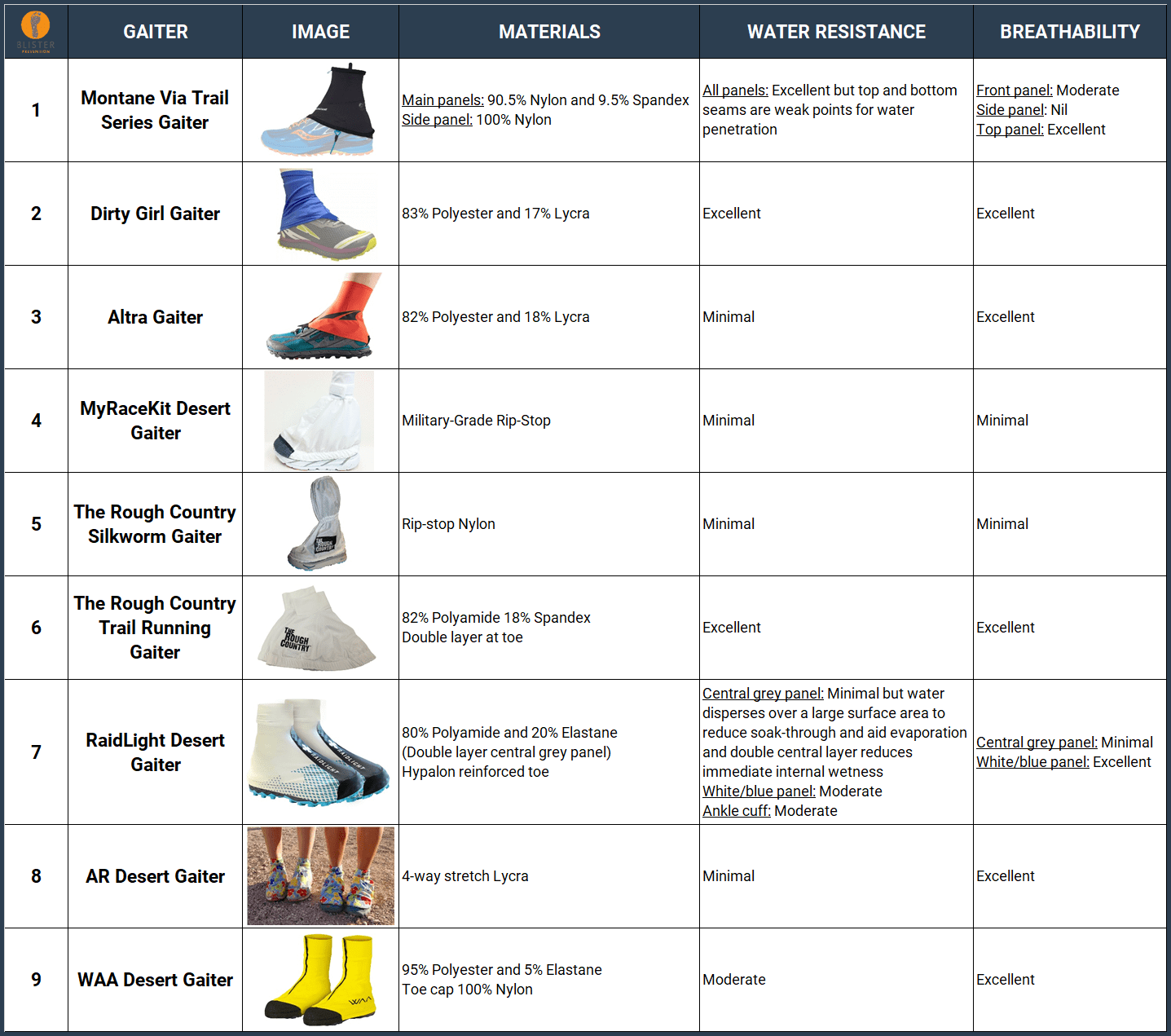
Water-resistance and breathability of 9 popular ankle and full-shoe gaiters
My Full-Shoe Gaiter Pick For Water-Resistance
The clear winner is number The Rough Country Trail Running Gaiter. Interestingly, it also demonstrated as high a breathability as any of the other highly breathable gaiters. So water-resistance and breathability are not mutually exclusive!
Is The Rough Country Trail Running Gaiter WATERPROOF?
I struggled to get any water through The Rough Country Trail Running Gaiter when testing with a single drop. So I wanted to see if it was fully waterproof. I made a little well in the material and filled it with water from the tap. After several minutes, still no water had seeped through. I agitated and rubbed the underside of the material, still nothing. It wasn't until I held it up directly to the tap spout and turned the tap on slowly, did water seep through the material. This indicates it is NOT fully waterproof. But gee, of all the gaiters tested, it clearly performed the best on the water-resistance front.
Questions Remaining
It's interesting this is called a "trail running gaiter" when other similarly-looking gaiters are called "desert gaiters". I wonder if it doesn't perform as well at keeping fine desert sand out? As you can see in the table, I also looked at a few ankle gaiters. While you wouldn't choose one of these if keeping your feet dry was a priority (they don't cover the mesh toebox of your shoe), Dirty Girl Gaiters were similarly water-resistant and breathable. But look at the Altra gaiter. It has almost the identical percentage of Polyester and Lycra as the Dirty Girl brand, but the water-resistance was clearly inferior. Perhaps not all Polyesters and Lycras are created equal.
Wrapping up
I hope this helps you choose a gaiter in terms of water-resistance for a wet race. Have you had any experience with these or other gaiters in wet and full immersion scenarios? Have you used The Rough Country Trail Running Gaiter in the desert? I'd love to hear about your experience in the comments, and I know there are plenty of others out there who are interested too.
